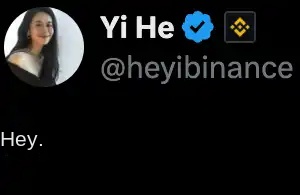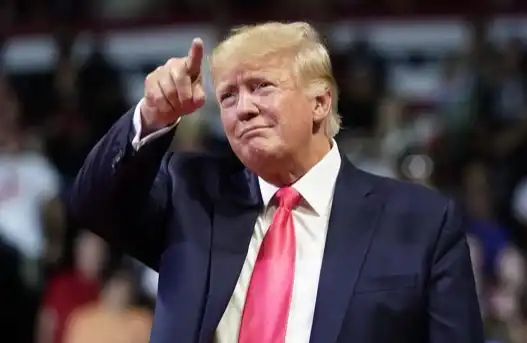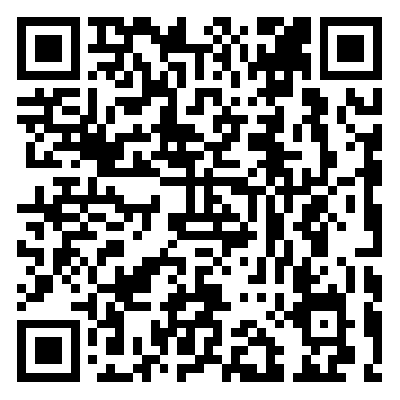When ETH drops below $1800, what is Vitalik thinking about?
Original Title: "What Is Vitalik Thinking When ETH Drops Below $1800"
Original Source: Golden Finance
As ETH continues to plummet and many users are shouting "Fix your eth" under Vitalik's tweets, people are curious: what is Vitalik, the founder of Ethereum, thinking?
ETH Drops Below $1800 Source: Coingecko
On March 29, 2025, Vitalik posted two blog posts in a row, revealing his current thoughts. Apparently, Vitalik is not particularly concerned about the ETH price.
Here are the two recent blog posts by Vitalik:
First: The Cultural and Political Tree Ring Model
One thing that has often confused me as I have grown up is that people frequently claim that we live in a deeply "neo-liberal society" that highly values "deregulation." I am confused because although I see quite a few people advocating for neo-liberalism and deregulation, overall, the actual state of government regulation is very different from any regulation that could reflect these values. The total number of federal regulations has continued to increase. KYC, copyright, airport security checks, and various other rules are constantly tightening. Since World War II, the percentage of U.S. federal tax revenue as a share of GDP has remained roughly constant.

If you told someone in 2020 that in five years, the U.S. or China would be leading in the open-source AI field, and the other would be leading in the closed-source AI field, and asked them which would be leading where, they might stare at you as if you were asking a trick question. The U.S. is a country that values openness, and China is a country that values closedness and control. U.S. technology is generally more inclined towards open source than Chinese technology, come on, it's obvious! However, they would be completely wrong.
What's going on? In this article, I will propose a simple explanation that I call the political and cultural tree ring model:

The model is as follows:
How a culture treats new things is the product of the prevalent attitudes and incentive mechanisms of that culture at a particular time. How a culture treats old things is mainly influenced by present bias.
Each period adds a new ring to the tree. As a new ring forms, people's attitudes toward new things also develop. However, soon these boundaries become fixed and difficult to change. New rings start to grow, influencing people's attitudes toward the next wave of topics.
We can analyze the above situation and other situations from the following perspectives:
· There is indeed a trend of deregulation in the United States, but this trend was most pronounced in the 1990s (if you look closely, you can actually see this on the chart!). By the 21st century, the tone had shifted towards strengthening regulation and control. However, if you look at what became "mature" in the 1990s (such as the internet), you will find that they eventually became regulated based on the principles predominant in the 1990s. This allowed the United States (and most parts of the world that followed suit) to enjoy several decades of relative internet freedom.
· Taxation is constrained by budgetary needs, with budgetary needs primarily driven by healthcare and welfare demands. The "red line" in this respect was drawn as early as 50 years ago.
· Both law and culture consider any moderately risky activity involving modern technology more suspicious than risky activities like mountaineering, which has a very high fatality rate. This can be explained by the fact that risky mountaineering has been something people have been doing for centuries, and attitudes become firmer when the general risk tolerance is much higher.
· Social media matured in the 2010s, where culture and politics, on the one hand, saw it as part of the internet and, on the other hand, as a distinct entity. Therefore, restrictive attitudes towards social media usually did not extend to the early internet—although internet authoritarianism has grown in general, there haven't been particularly strong attempts to crack down on unauthorized file sharing.
· Artificial intelligence matured in the 2020s, with the United States being the leading power at the time, followed closely by China. Thus, adopting a "commoditization complementarity" strategy in AI aligns with China's interests. This intersects with the widespread developer support for open source. The result is that the environment for open-source AI is very real but also quite AI-specific; older technology domains remain closed, like walled gardens.
More generally, the implication here is that it is difficult to change the way a culture treats things that already exist and the way it is biased toward things that have already crystallized in attitude. It is easier to invent new patterns of behavior to transcend old patterns and strive to maximize our opportunities to obtain good norms. This can be achieved in various ways: developing new technology is one way, using (physical or digital) online communities on the internet to experiment with new social norms is another.
For me, this is also one of the attractions of the crypto space: it provides an independent technical and cultural foundation to do new things without the burden of existing biases. We can bring life to the forest by planting and nurturing new trees rather than planting the same old tree.
Second, we should talk less about public goods funding and more about open-source funding
For a long time, one topic I have been concerned about is how to fund public goods. If a project provides value to a million people (without a fine-grained way to determine who benefits and who does not), but each person receives only a small benefit, it is likely that no one would feel that funding the project is in their interest, even if the project is very valuable overall.
In economics, the language of "public goods" has a century-old history. In the digital ecosystem, especially in decentralized digital ecosystems, public goods are extremely important: in fact, there is good reason to believe that the average commodity that people might want to produce is a public good. Open-source software, academic research on cryptography and blockchain protocols, open educational resources, and more are all public goods.
However, the term "public goods" faces significant challenges, particularly:
1. The term "public goods" is often used in public discourse to refer to "government-produced products," even if it is not a public good in an economic sense. This can be confusing because it gives the impression that whether a project is a public good does not depend on the project itself and its attributes, but on who is building it and what they claim their intent is.
2. Public goods funding is generally perceived to lack rigor, operate based on social expectation biases (sounding good rather than actually being good in practice), and favor insiders who can play social games.
For me, these two issues are related: the term "public goods" is easily influenced by social games, and a large part of the reason is that the definition of "public goods" is easily expanded.
Let's see what happens when we search for the phrase "Building for the Common Good" on Twitter. I just did the search now, and here are some of the initial results:

You can keep scrolling and find many projects using "Building for the Common Good" to describe themselves.
This is not to criticize individual projects; I'm not very familiar with the two projects mentioned above, and they may both be great projects. However, both of these examples are commercial projects with their own tokens. There's nothing wrong with being a commercial project, and launching your own token is usually not wrong either. However, when it's so easy to blur the line to the point where the term "common good" now seems to just refer to a "project."
Open Source
As an alternative to the "common good," let's think about the term "open source." If you think about some core examples of digital public goods, you'll find that they are all open source:
· Academic blockchain and cryptography research
· Documentation, tutorials...
· Open source software (e.g., Ethereum clients, libraries...)
On the other hand, open-source projects seem to default to being public goods. Of course, you can certainly come up with counterexamples: if I write software highly tailored to my personal workflow and put it on GitHub, then most of the value created by that project might still accrue to me personally. However, the act of open-sourcing (rather than keeping it proprietary) is certainly a public good, with benefits widely dispersed.
One real advantage of the term "open source" is that it has a clear and widely agreed-upon definition. The Free Software Foundation's free software definition and the Open Source Initiative's open source definition have been around for decades, and there are natural ways to extend these definitions to areas beyond software (such as writing, research).
In the crypto space, the inherent state and multipartite nature of applications, as well as the new centralization vulnerabilities and control vectors implied by these considerations, do suggest that we need to slightly expand that definition: open standards, the insider attack testing and walkaway tests introduced in this article can be valuable additions to the FSF + OSI definitions.
So what's the difference between "open source" and "public goods"? Well, let's have the bots provide a few examples first:

I personally completely disagree with the notion that examples in the first category are not public goods. A project having a high contribution barrier does not preclude it from being a public good, and companies benefiting from that project are too. Furthermore, a project can absolutely be a public good while the things around it are private goods.
The second category is even more interesting. First, we should note that all five examples are in physical space, not digital space. Therefore, if we want to focus on digital public goods, the above examples do not provide a reason to only focus on "open source." But what if we do want to cover physical goods? Even in the crypto space, there is a passion to better manage physical things, not just digital ones; in a sense, this is the whole point of a network state.
Open Source and Local Physical Public Goods
Here, we can make an observation: while providing these things locally is an "infrastructure-building" issue and can be done in an open or closed manner, the most effective way to provide these things globally often ends up involving... true open source. Clean air is the most obvious example: a lot of research and development has gone into it, much of it open source, to help people around the world enjoy cleaner air. Open source can help make any type of public infrastructure easier to deploy globally. The question of how to effectively provide physical infrastructure locally remains important—but this question applies equally to democratically managed communities and companies.
Defense is an interesting case. Here, I would like to make the following argument: if you create a project for defense reasons that you are not willing to open source, then it is very likely that while it may be in the public interest locally, it may not be in the public interest globally. Weapons innovation is the most obvious example. Sometimes, one side in a war may have a stronger moral case than the other, justifying offensive action, but on average, developing technology to enhance military capabilities does not make the world better. The exception (defense projects people want to open source) could actually be capabilities related to "defense"; an example might be decentralized agricultural, power, and internet infrastructure that can help people stay fed, running, and connected in challenging environments.
Therefore, here, shifting the focus from "public goods" to "open source" also seems like the better choice. Open source should not mean "just because it's open source, building anything is equally noble"; it should be about building and open-sourcing what is most valuable to humanity. But distinguishing which projects are worth supporting and which are not has long been the primary task of public goods funding mechanisms, as is well known.
Welcome to join the official BlockBeats community:
Telegram Subscription Group: https://t.me/theblockbeats
Telegram Discussion Group: https://t.me/BlockBeats_App
Official Twitter Account: https://twitter.com/BlockBeatsAsia
 Forum
Forum OPRR
OPRR Finance
Finance
 Specials
Specials
 On-chain Eco
On-chain Eco
 Entry
Entry
 Podcasts
Podcasts
 Data
Data

 Summarized by AI
Summarized by AI







